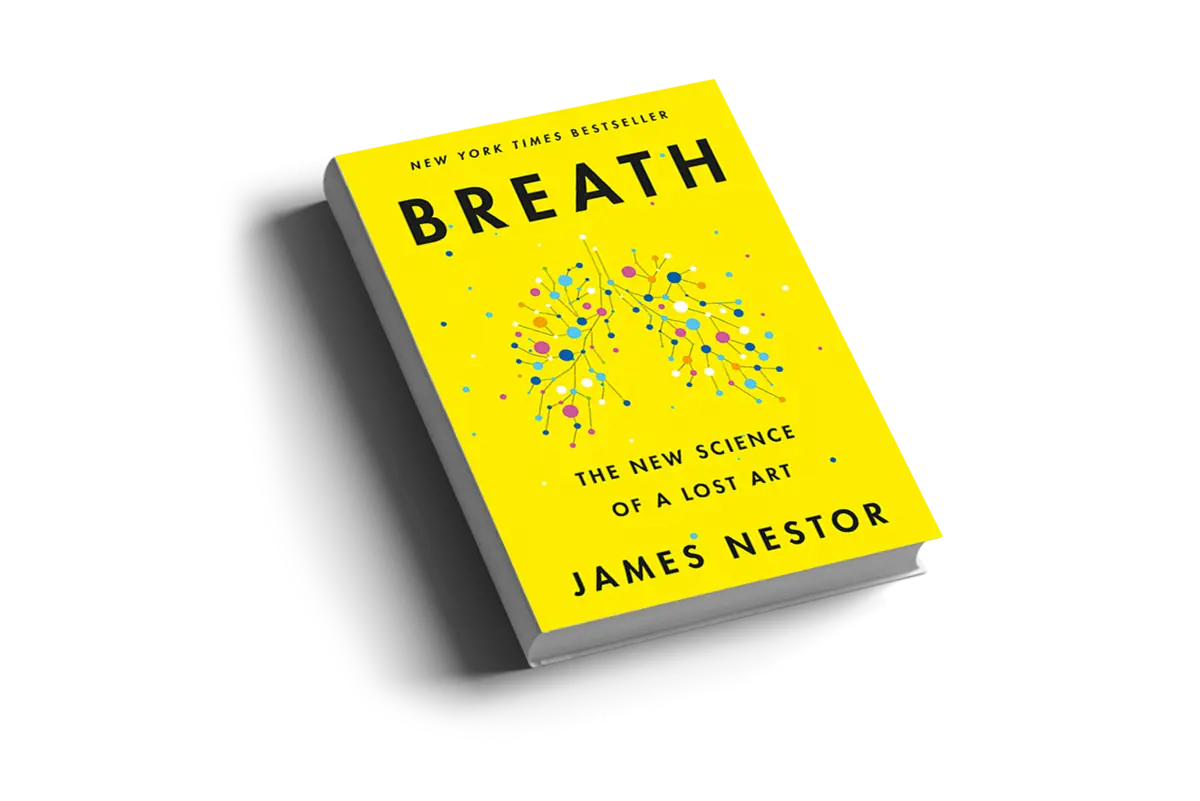
BREATH: The New Science of a Lost Art by James Nestor
Published by Respondr 3 min readBreathing Through the Call: Lessons from 'BREATH: The New Science of a Lost Art' for First Responders
In his groundbreaking book, "BREATH: The New Science of a Lost Art," James Nestor delves into the transformative power of breathing and how it can significantly impact our health, well-being and performance. This exploration is particularly relevant for first responders, whose jobs subject them to high-stress environments, demanding both physical stamina and mental clarity. Drawing from Nestor's insights, below we look at three practical activities designed to enhance the well-being of first responders, helping them harness the power of their breath to improve resilience, reduce stress and increase alertness on the job.
The Science of Breathing
Nestor's research unveils the profound effects that breathing techniques can have on the body, influencing everything from blood pressure and digestion to emotional regulation and stress response. For first responders, mastering the art of breathing is not just about survival; it's about thriving in the face of adversity. By incorporating specific breathing exercises into their routines, first responders can better manage the physiological impacts of stress, improving overall health and operational performance.
Activity 1: Box Breathing for Stress Reduction
Box breathing, also known as square breathing, is a powerful stress-relief technique that can calm the mind and regulate the body's stress response. It involves breathing in for a count of four, holding the breath for a count of four, exhaling for four and holding again for four. This practice can be particularly beneficial before entering a high-stress situation or to decompress after a call. By engaging in box breathing, first responders can lower their heart rate and blood pressure, promoting a state of calm and focus.
How to Practice:
- Find a quiet space and sit with your back straight.
- Close your eyes and begin to inhale slowly through your nose to a count of four.
- Hold your breath for another count of four.
- Slowly exhale through your mouth for four counts.
- Hold your breath once more for a final count of four before repeating the cycle.
- Aim for a duration of four to five minutes, or as long as needed to feel a sense of calm.
Activity 2: Diaphragmatic Breathing for Enhanced Oxygenation
Diaphragmatic breathing, or belly breathing, encourages full oxygen exchange and is particularly effective in reducing the energy expenditure on breathing, essential for first responders who require optimal physical performance. This technique not only improves oxygenation of the blood but also promotes relaxation and reduces stress.
How to Practice:
- Lie on your back with your knees slightly bent and your head on a pillow.
- Place one hand on your upper chest and the other below your rib cage, allowing you to feel the movement of your diaphragm.
- Inhale slowly through your nose, feeling the air move into your abdomen without engaging your chest.
- Exhale slowly through pursed lips, pressing gently on your abdomen to help expel air.
- Repeat for 5 to 10 minutes daily, gradually increasing the time as you become more comfortable with the practice.
Activity 3: The 4-7-8 Technique for Improved Sleep
The 4-7-8 breathing technique is a simple method that can help first responders fall asleep more quickly and enjoy a deeper, more restorative sleep. Given the irregular and often disruptive sleep patterns in emergency services, this practice can be a game-changer, helping to mitigate the effects of sleep deprivation on health and job performance.
How to Practice:
- Sit or lie in a comfortable position.
- Place the tip of your tongue against the ridge of tissue just behind your upper front teeth, and keep it there throughout the practice.
- Exhale completely through your mouth, making a whoosh sound.
- Close your mouth and inhale quietly through your nose to a mental count of four.
- Hold your breath for a count of seven.
- Exhale completely through your mouth, making a whoosh sound to a count of eight.
- This is one breath cycle. Complete three more cycles for a total of four.
For first responders, the mastery of breathing techniques as outlined in "BREATH: The New Science of a Lost Art" offers a tangible and powerful tool for enhancing well-being and operational efficiency. By incorporating box breathing, diaphragmatic breathing and the 4-7-8 technique into their daily routines, first responders can significantly improve their stress management, oxygenation and sleep quality. These practices underscore the profound impact that breathing can have on our health and stress resilience, serving as a testament to the art and science of breathing well. Nestor’s work is a clarion call to all first responders to rediscover and harness the lost art of breath for a healthier, more balanced life on and off duty.